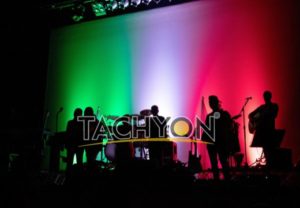What is a Tri-color Tube?
The three-primary color tube means that the fluorescent powder in the tube as the luminous substance is a combination of three kinds of phosphors that can emit red, green and yellow light, which emits white light, and the light it emits is similar to the color of daylight; its manufacturing The cost is higher than that of ordinary fluorescent lamps, and it is more “comfortable” visually.
The advantages of three primary color phosphors compared to traditional halogen powders:
- It has good color rendering, low light decay and high light efficiency. Disadvantages: Because of its luminous characteristics, it still uses alternating current to work, which also shows that the three-primary color lamp has serious radiation and stroboscopic, and it is not suitable for close-range table lamp lighting. In the case of using three primary color phosphors, in order to reduce the expensive three primary color phosphors, the economic effect is very obvious;
- Reduce packaging and storage and transportation costs;
- Energy saving. Because the luminous efficiency of the lamp tube is related to the tube diameter, the luminous efficiency will decrease if the tube diameter is too thick and too thin, and the luminous efficiency is the largest under a certain diameter tube.

Why is there an optimal tube diameter for luminous efficiency? The analysis is as follows:
If the tube diameter is too thick, the ultraviolet light emitted by the excited atoms of mercury in the tube will be absorbed by the gas in the tube itself, so less ultraviolet light reaches the phosphor on the tube wall, so the visible light emitted is also reduced.
If the tube diameter is too small, the charged particles (electrons and positive ions) in the tube can easily run to the tube wall to recombine (neutralize) neutral atoms, and the loss of charged particles will increase. In order to maintain the conductive state of the lamp tube, it is necessary to generate more electrons and positive ions, so that the tube pressure will increase, so the electric power of the lamp tube must increase, that is, the light efficiency of the lamp tube will decrease.
According to research data, experimental results and theoretical calculations show that the best pipe diameter (inner diameter) is about 18-22mm, which is roughly in the range of T5-T8.
What is the difference between three primary color energy-saving lamps and ordinary energy-saving lamps
Tri-color fluorescent lamps seem to be very hot in the market. People are now very concerned about energy conservation and environmental protection in lamps and lanterns. However, there are still many people who are not particularly clear about tri-color fluorescent lamps, so they are particularly hesitant to choose when buying. Are tri-color fluorescent lamps energy-saving lamps? What are the differences between tri-color energy-saving lamps and ordinary energy-saving lamps?
1. Are tri-color fluorescent lamps energy-saving lamps?
There are also energy-saving lamps for three-primary-color fluorescent lamps. The three-primary-color fluorescent lamps improve the efficiency of the lamp through green light, plus blue and red light, and properly balance the three colors, thus successfully achieving high luminous efficiency and high light efficiency. A new type of fluorescent lamp with color rendering performance.
Further changing the mixing ratio of these three kinds of light, resulting in the birth of a three-primary fluorescent lamp (2700-3000K) with a warm light effect similar to a bulb; a three-primary fluorescent lamp (4000-5000K) with a neutral white light that is full of spring; Refreshing and bright daylight color three-primary fluorescent lamp (6200 ~ 6700K).
The advantages of three-color energy-saving fluorescent lamps are: small size, soft light color, good color rendering, unique shape; luminous efficiency is about 30% higher than ordinary energy-saving lamps, 5-7 times higher than incandescent lamps, that is, a 7-watt lamp The luminous flux emitted by the tri-color fluorescent lamp is the same as the luminous flux emitted by an ordinary 40-watt incandescent lamp.
2. The difference between three primary color energy-saving lamps and ordinary energy-saving lamps
The main difference between tri-color energy-saving lamps and ordinary energy-saving lamps is the phosphor. Tri-color fluorescent lamps use rare earth phosphors with higher luminous efficiency.
The phenomenon of material luminescence can be roughly divided into two categories: one is when the material is heated to produce thermal radiation and emit light, and the other is when the object is excited to absorb energy and transitions to an excited state (unstable state) in the process of returning to the ground state. Energy is emitted in the form of light. Most of the luminescent materials that use rare earth compounds as a matrix and rare earth elements as activators belong to the latter category, namely, rare earth phosphors. Rare-earth element atoms have abundant electronic energy levels, because the 4f orbital in the electronic configuration of rare-earth element atoms creates conditions for multiple energy level transitions, thereby obtaining a variety of luminescence properties.
The tri-primary energy-saving lamp is a typical hot cathode fluorescent lamp. It is an energy-saving lamp made by coating the inner wall of the glass tube with tri-primary phosphors (mixed with red, green and blue rare earth phosphors in a certain proportion). The phosphor emits light under the excitation of ultraviolet rays. Its luminous efficiency is more than twice as high as that of incandescent lamps. Generally, the luminous flux is above 55lm/W, especially its color rendering is greater than Ra78. The luminous flux maintenance rate in 100 hours is above 90%, and the luminous flux maintenance rate in 2000 hours is about 80%. The attention of countries all over the world.
When the lamp is energized, it discharges between the tungsten wire electrodes encapsulated at both ends of the lamp and emits ultraviolet rays. The phosphor converts short-wave radiation (ultraviolet rays) into visible light and emits light. Rare earth trichromatic fluorescent lamp, which contains rare earth phosphors of yttrium, europium and terbium, can emit brighter light, which is closer to the solar spectrum than ordinary fluorescent lamps, and can save 50% of energy consumption compared with ordinary fluorescent lamps to achieve the same illumination. The powder is a mixture of three types of phosphors that emit narrow-band red (611nm), green (545nm) and blue (450nm) spectra.



